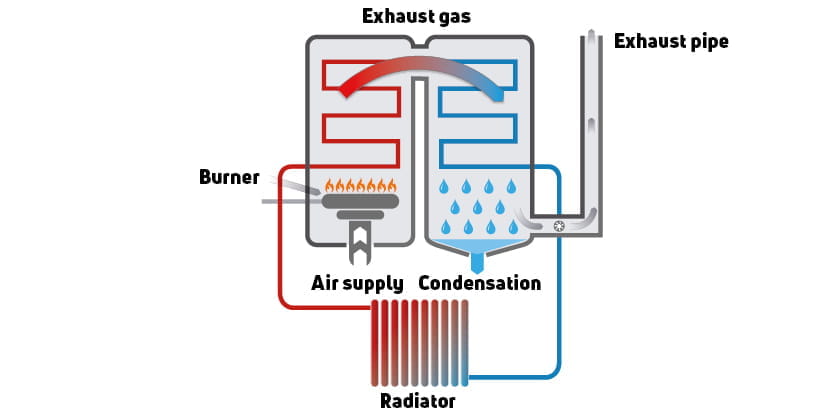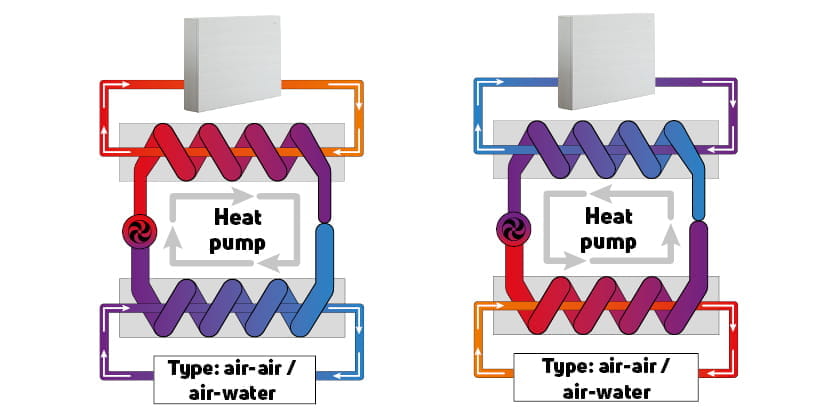- Renovation
- Radiators
Top 3 reasons to replace radiators
Replacing old radiators
Although high-quality radiators last a very long time, every radiator reaches the end of its lifespan at some point. The water in a hydronic heating system inevitably poses a risk of corrosion over time, which in turn may affect the radiator’s heat output and result in higher energy bills. Even if the radiator is still working perfectly after 30 years, the likelihood of it failing or leaking increases.
Replacing old radiators firstly ensures that the heating system can continue to work properly, but also boosts its efficiency as radiator technology has improved significantly. Due to their lower water content, modern radiators have a faster response time, which leads to more efficient operation.
Read more about the technological evolution of modern heating systems
Replacing radiators to upgrade the interior
Another reason why radiators are sometimes replaced is to give the interior a new look and feel. Today the choice of radiator models and colours is much wider than a few decades ago when classic white panel radiators were the norm. Now the vast range of modern radiators, designer radiators and towel warmers includes both horizontal and vertical models in various dimensions and colours. So, it’s easier than ever before to create added value for the interior with the right radiators.
You can of course still opt for a white radiator that fits in both classic and modern interiors. But why not enhance the interior with a coloured radiator that blends in seamlessly with the room’s colour palette? Or you can even make a bold choice and choose a model or colour that stands out to create a real eye-catcher in the room.
You don’t even have to redecorate the entire room or building to upgrade the interior with new radiators. You can simply replace the radiator(s) you want to give the room a fresh look with very little effort. For those who are planning a more extensive renovation, replacing the radiators will ensure every room gets the perfect finishing touch.
Read more about designer radiators to match every interior style
Replacing radiators to match a new heat source
A third and increasingly important reason to replace radiators is to match them to the new heat source when the heating system is updated. More and more people are switching to low temperature heating with a modern condensing boiler or a heat pump. When the system temperatures drop, it’s important to reevaluate the existing radiator dimensions to ensure they are the right size and can provide sufficient heat to ensure indoor climate comfort. Let’s look at two examples:
- Heating refurbishment with a gas condensing boiler
If the system temperatures are low, more heat can be recovered from the exhaust gas in the boiler. The energy content of the fuel is also much better utilised and the efficiency of the overall system increases.
At the moment the installer sets the system temperatures on the boiler controller, the technical advances in radiator technology come into play. As mentioned above, radiators have become more efficient, so in combination with a modern condensing boiler and lower system temperatures there is great potential for saving energy on a daily basis.
- Heating renovation with a heat pump
A heat pump can be highly efficient if certain conditions are met. These include the lowest possible system temperatures, which can only happen if the building meets modern insulation standards. If this is not the case, a heat pump could even end up increasing the heating costs compared to an old boiler.
Furthermore, the emitters must be adapted to the low system temperatures. In the past, underfloor heating was considered to be the best match for a heat pump, but thanks to technical advances modern panel radiators can also be operated at temperatures of 45°C and above. For even lower temperatures fan-assisted radiators such as Ulow-E or fan convectors such as iVector S2 offer a great alternative. The latter even offers the possibility of active cooling in summer when combined with a reversible heat pump.
If you are planning to replace a radiator, we advise you to read our guide to radiator replacement and to browse our complete radiator range to find your perfect match. Should you have any questions or want tailored advice, don’t hesitate to reach out to our experts. They will be more than happy to help.



